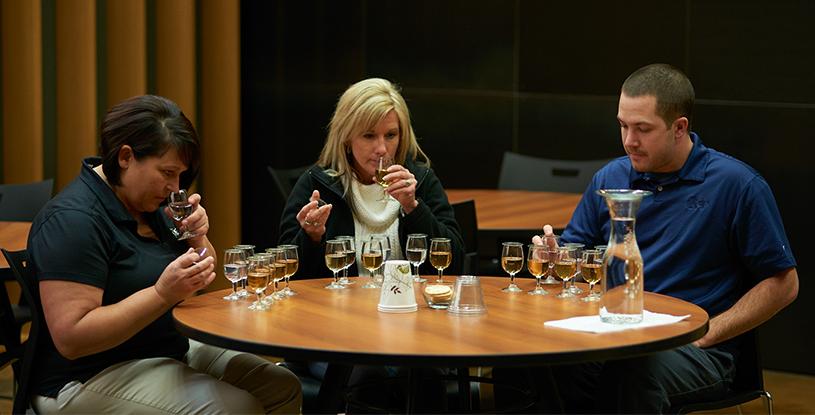The lore surrounding American whiskey has captivated an eager market. Especially the notion of “craft,” with carefully created mash bills, skillful blending and unique barrel finishes. And there are famous stories about fermentation and distillation -- every aspect of the whiskey-making process -- passed down across generations.
These remain the essence of American whiskey and support strong demand with consumers around the world. But behind the artisanal nature of craft whiskey, there’s a scientific, analytical side: Quality Control that ensures a consistent product ready for creative touches.
What’s involved in distilling a premium-quality whiskey? Short answer: A lot.
Every step of the process requires careful attention and analysis. Sometimes that’s scientific (checking acid profiles in the laboratory, for example). Others, it’s a sensory analysis. A keen, well- trained nose determines a lot, beginning with the quality and freshness of the grain and water used to make mash and again during the critical phase when distillate is evaluated before going into the barrel.
Ultimately, the Production team at MGP will pull samples more than two dozen times for the Quality team to check before whiskey reaches the customer, starting during fermentation to ensure that the sugar is eaten by the yeast efficiently. They are looking for consistency among each one of the sugars in the fermenter, balancing glucose, maltose, and several others. When it’s clear that the yeast have taken full advantage of the sugars, fermentation is complete
Before the fermented material reaches the beer still, the Production team submits another sample to the Quality team to check sugar content, acid profile, and ethanol levels. Yet another check occurs when the ‘beer’ reaches the distilling stage.
Then, as mentioned above, a trained sensory panel conducts an organoleptic check – smell, taste and visual inspection of the distillate. If any defects are discovered, the distillate will not be barreled.
Once a barrel of whiskey is stored, MGP’s team of Master Blenders monitor warehousing conditions including temperature and humidity levels. Together, the Quality and Warehouse teams follow precise guidelines for monitoring and sampling, a significant undertaking considering the hundreds of thousands of barrels stored for MGP customers.
“MGP’s warehouses can create some amazing flavor profiles throughout the maturation process,” says Master Blender Louis Schroeder, who leads the quality team at the historic Lawrenceburg distillery. “Our objective at every step prior is to ensure that the whiskey going into the barrel has the best chance to be amazing when it comes out of the barrel.”
After reaching full maturation, the whiskey may be tested a final time at the customer’s request. This testing is a sensory check once the vessel or batch of barrels leaves the MGP distillery.
While the quality-control process is straightforward, the Quality team’s daily schedule is not. Between regular analytical and sensory evaluations, the team speaks with customers and assists with Production trials in an effort to continuously evolve and improve the quality of distillate.
The quality control process in whiskey-making is detailed and painstaking, with little room for error. The next time you raise a glass, offer a silent toast to the team that nurtured your whiskey through numerous quality checks. As whiskey expert and historian Michael R. Veach sees it, they are ‘unsung heroes’.

